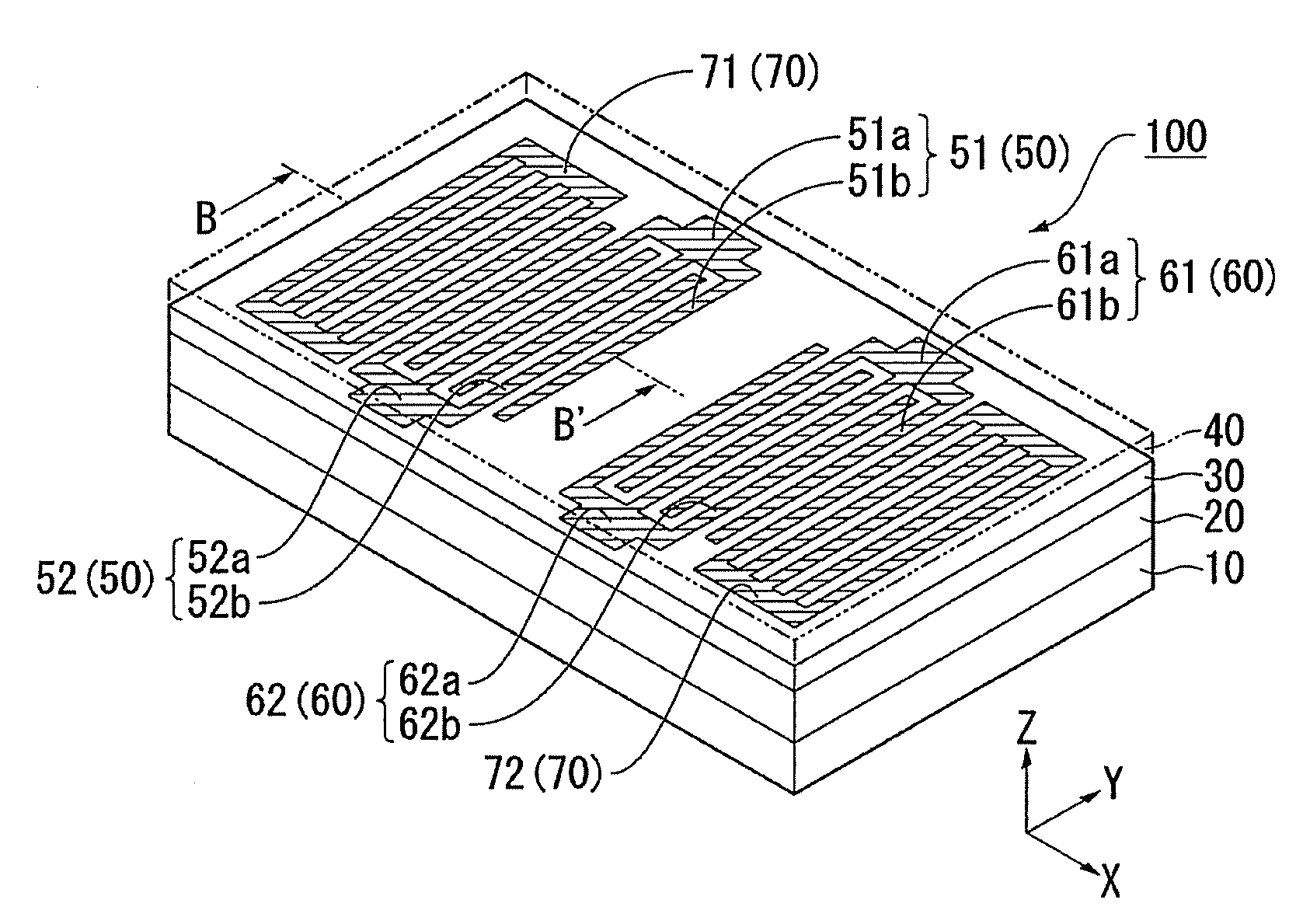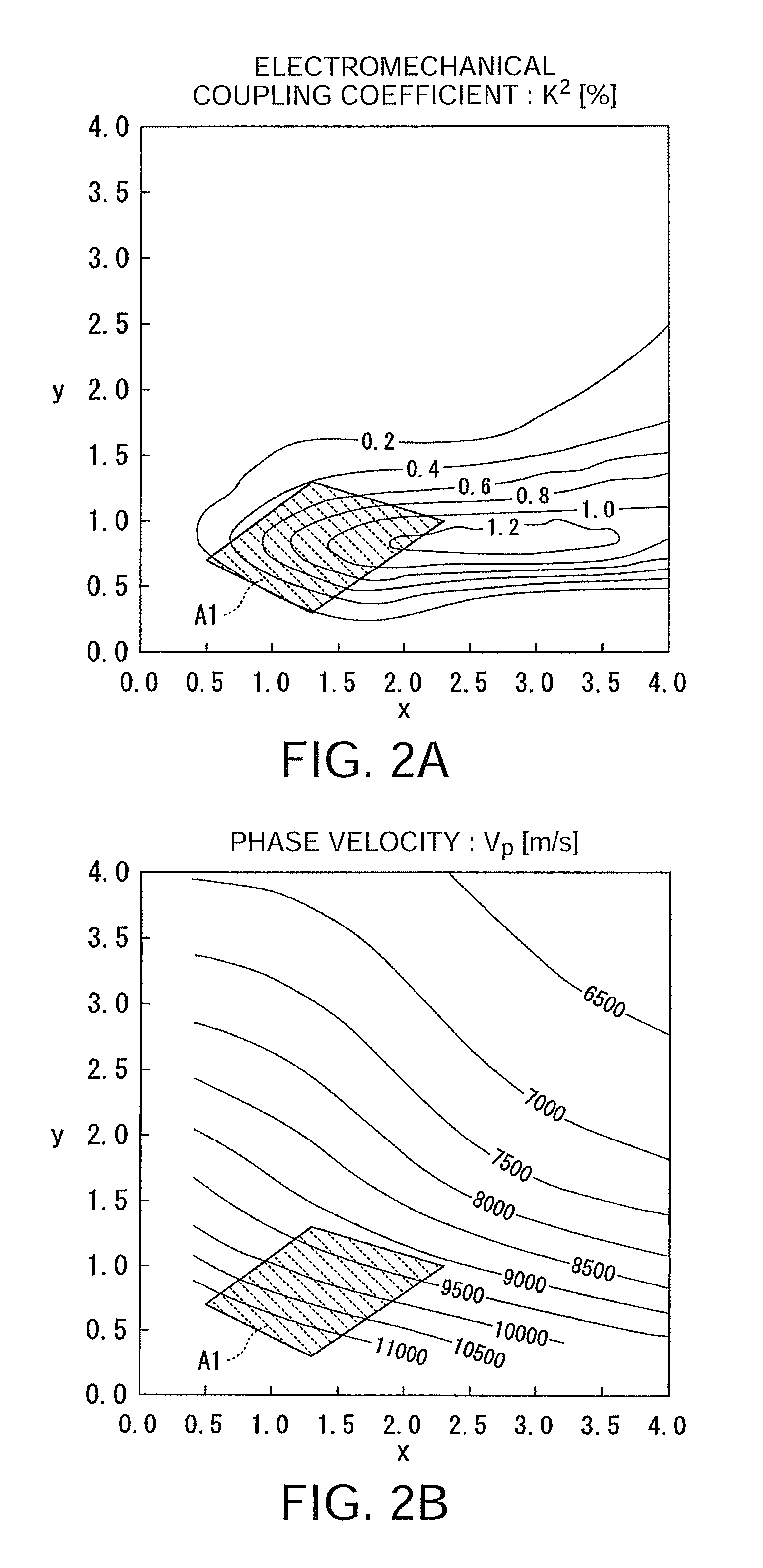Surface acoustic wave element
a surface acoustic wave and element technology, applied in piezoelectric/electrostrictive/magnetostrictive devices, piezoelectric/electrostriction/magnetostriction machines, electrical apparatus, etc., can solve the problems of reducing the characteristics of the saw element, increasing the manufacturing cost, and reducing the operating frequency. , to achieve the effect of reducing the influence of the electrode pair on the surface acoustic waves, increasing the operating frequency
- Summary
- Abstract
- Description
- Claims
- Application Information
AI Technical Summary
Benefits of technology
Problems solved by technology
Method used
Image
Examples
working example 1
[0079]Next, a manufacturing method and characteristics of a SAW element according to a working example 1 will be described. FIG. 6A is a schematic plan view showing an outline configuration of a SAW element 200 according to this working example and FIG. 5B is a sectional view as seen from the direction of lines C-C′. While the SAW element 200 is different from the SAW element 100 according to the first embodiment in that the SAW element 200 is one-port resonator, the SAW element 200 has the same sectional structure as that of the SAW element 100.
[0080]As shown in FIGS. 5A and 5B, the SAW element 200 includes an aluminum nitride layer 230 and a silicon oxide layer 240 provided on the aluminum nitride layer 230. An IDT 250 and a reflector 270 are provided between the aluminum nitride layer 230 and silicon oxide layer 240. The IDT 250 includes a pair of interdigital transducers 251 and 252. The interdigital transducer 251 includes a trunk 251a and multiple branches 251b and the interdi...
working example 2
[0093]Next, characteristics of a SAW element according to a working example 2 will be described. The SAW element according to the working example 2 is two-port SAW filter and has the same configuration as that of the SAW element 100 shown in FIG. 1. While the SAW element according to the working example 2 is manufactured using the same manufacturing method as that of the working example 1, the working example 2 is different from the working example 1 in sizes of components and the like. For the SAW element according to the working example 2, the wavelength λ of SAWs was 1.6 μm, a value x (x=2πH1 / λ) obtained by non-dimensionalizing the thickness H1 of the alumina nitride layer was 3.06, and a value y (y=2πH2 / λ) obtained by non-dimensionalizing the thickness H2 of the silicon oxide layer was 3.14. That is, for the working example 2, the values of (x, y) were selected from the area A3.
[0094]Also, a value Z (Z=2πH2 / λ) obtained by non-dimensionalizing the thickness H3 of the IDT was 0.26...
PUM
 Login to View More
Login to View More Abstract
Description
Claims
Application Information
 Login to View More
Login to View More - R&D
- Intellectual Property
- Life Sciences
- Materials
- Tech Scout
- Unparalleled Data Quality
- Higher Quality Content
- 60% Fewer Hallucinations
Browse by: Latest US Patents, China's latest patents, Technical Efficacy Thesaurus, Application Domain, Technology Topic, Popular Technical Reports.
© 2025 PatSnap. All rights reserved.Legal|Privacy policy|Modern Slavery Act Transparency Statement|Sitemap|About US| Contact US: help@patsnap.com



